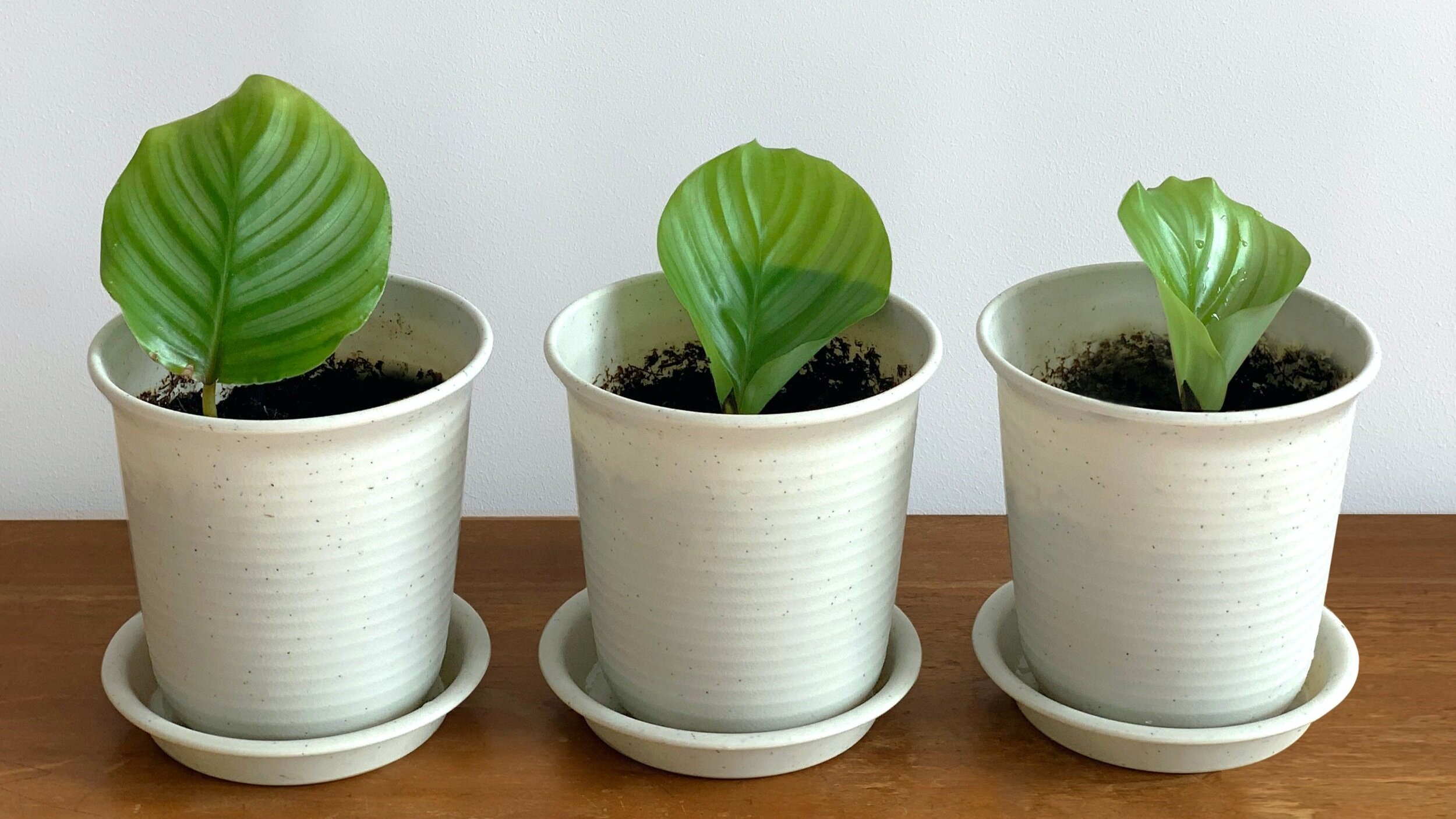Calathea Orbifolia (strictly speaking, they’re called Goeppertia orbifolia) are a really striking and luscious looking plant when in good condition, but so often owners ask for Calathea Orbifolia care tips due to drooping and browning leaves, causing them to be commonly referred to as a diva of the houseplant world.
However, with the right conditions they can make a really beautiful and fast growing addition to the houseplant collection. Hopefully our care guide packed with tried and tested tips will keep your Goeppertia orbifolia healthy!
Read on for Calathea orbifolia care tips and propagation advice.
Native habitat
Goeppertia orbifolia are native to the tropics of South America, but can now be found in many tropical climates including Thailand, parts of Africa and the West Indies. They grow on the floor of tropical forests, often found underneath large trees. As a result, they are used to receiving dappled sunlight, to partial shade.
Light
Like other members of the Marantaceae family the orbifolia does best in indirect light, mimicking the forest floor conditions of its natural habitat. Calathea orbifolia will enjoy being placed a little way back from a north or east facing window.
Water
Water is key to keeping these plants happy. As they are naturally forest floor dwellers they like their roots to be consistently moist but not sodden. It is advised to water when just the top inch or two of the soil feels dry. Ensure any water is fully drained from the pot after watering. Calathea are prone to browning tips of the leaves when watered with tap water. However, help is at hand, as when added to tap water Liquid Gold Leaf feed dechlorinates it, keeping Calathea’s much happier. We notice a marked difference in leaf health when including Liquid Gold Leaf into the water compared to when we used just tap water. Rain water will be best for Calathea if you can collect it. Fish tank water also comes highly recommended, or failing all of the above, tap water that has been left out for 24hrs to allow some of the chemicals to evaporate.
Humidity
Humidity is important for Goeppertia orbifolia, ideally around the 60% mark. if your plant has crispy brown leaf edges it is likely due to lack of humidity. You can try a humidifier or pebble tray under the plant filled with water. Or moving the plant to a bathroom if there is adequate natural light. If the light in your bathroom is not ideal for this plant, you could bring the plant with you several times a week into the bathroom whilst showering to give it a humidity boost.
Soil
The best type of soil for Calathea orbifolia is moisture retentive but also free draining enough to provide aeration to the roots. You can mix around 30% of coir and/or perlite in with a general peat free houseplant compost. We are big fans of Soil Ninja. Their Calathea and Maranta mix provides the perfect balance.
Feed
Calathea orbifolia can be fed every couple of weeks in the summer, we love Liquid Gold Leaf. Reduce feed to every couple of months in winter.
Repotting Calathea orbifolia
As with most houseplants you will know that your Calathea orbifolia needs repotting when the roots are escaping through the drainage holes at the bottom of the pot. Other signs your plant needs repotting are that you are having to water much more regularly than normal, along with reduced plant growth. Calathea orbifolia are particularly sensitive to shock from repotting so only increase by one pot size (a couple of centimetres) and don’t be surprised if your orbifolia seems unhappy and droopy after repotting. With correct conditions and care it should perk up again.
Propagation
The orbifolia can be propagated by division as the new growth called offsets comes from rhizomes (thick horizontal root-like growth) from the mother plant. You can follow these simple steps to give it a go...
Step 1: Make sure you have a healthy plant to take cuttings from.
Step 2: Remove the plant from its pot and gently tease away some of the soil to expose the base of the plant and get a good look at the rhizomes and roots
Step 3: Find an offset (stems and leaves growing from a rhizome)
Step 4: Gently pull apart or cut the rhizomes (thick horizontal root-like growth) from the mother plant, ensuring that you have rhizome, root system, stem and leaf together
Step 5: Now you can pot this up into your preferred substrate. give it a little water and keep out of direct sun.
Divided Calathea orbifolia offsets. Photo by Kulbir
Toxicity
Calathea orbifolia are not toxic so will be safe to have around pets and young children.
Common problems with Calathea orbifolia
The most common problems are drooping leaves and browning tips with yellow halos. The drooping leaves can be caused by overwatering or underwatering, so check whether the soil is damp or dry and take stock of your recent watering pattern. Brown leaf edges with a yellow halo are most commonly caused by chemicals in the water or lack of humidity. Try switching to rain water and adding a pebble tray. Alternatively add Liquid Gold Leaf into the water which dechlorinates it as well as providing feed.
We hope you found this useful
We have lots of plant care and propagation advice articles on our blog, please do take a look.



